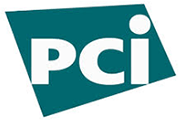SERVICE
Patch Management Services
Schedule

RSI Security's Patch Availability Service provides a comprehensive report of all needed hardware, software, and firmware security patches to support our client’s compliance obligations under their respective regulatory body’s requirements.
We will work with our client’s staff on a consistent basis, ensuring responsiveness and expertise on our client’s requests for their individual patch availability report. RSI Security will review our client’s Master Asset List and provide documentation and patches.
Patch management is a necessary, but labor and time intensive process that can consume significant technical resources. Let RSI Security monitor the hundreds of third-party software and hardware vendor websites for released patches and provide documentation and installation support for your business.
Schedule A Consultation for Patch Management Services
What is Patch Management?
Patch management is a way to identify and remediate security gaps within an organiation’s IT infrastructure. Digital assets (e.g., software, hardware, networks) may require specific security updates to be deployed to keep cybersecurity controls current. Failure to deploy these security updates promptly could present security risks that may translate into potential data breaches.
Patch management looks different for every organization. However, in general, it involves:
- Identifying the assets in need of security patches.
- Testing out patches to ensure seamless implementation.
- Installing patches, either whole-sale or in manageable batches.
- Monitoring patch effectiveness and, eventually, new patch availability.
To achieve the full effectiveness of enterprise patch management, organizations need to deploy patches at the right time—typically as soon as they are available and stable—and with the appropriate dedicated resources. The fast pace at which digital environments are evolving also requires organizations to manage patching proactively rather than reactively for maximum ROI.
Why We Need Patch Management
Beyond securing critical assets within your IT infrastructure, patch management is a requirement for many regulatory compliance frameworks. For example, PCI DSS requires organizations that handle cardholder data (CHD) to routinely deploy patches on all assets involved in processing transactions. Similarly, HIPAA requires covered entities to routinely deploy patches on all systems that handle sensitive protected health information (PHI).
Non-compliance with frameworks such as PCI DSS and HIPAA could result in data breaches and in the case of HIPAA, significant non-compliance penalties and legal ramifications.
Besides meeting compliance obligations, patch management is a stepping stone to passing security audits that may be required by region- or industry-specific regulations. The last thing any organization would want to deal with when bidding for a lucrative contract is a failed audit.
How Your Company Can Benefit from Patch Management
By optimizing and implementing patch management services across your company, you will strengthen your security posture in the short and long term. It only takes a single exploited vulnerability to compromise the security of your entire digital infrastructure, resulting in the potential loss of sensitive data and disruption in business continuity.
Implementing patch management as a service will help secure your sensitive data and protect your company’s legal and financial reputation. A robust and mature patch management infrastructure also provides greater security assurance to stakeholders and customers.
Patch Availability Recommendations Specific to Industry:

NERC CIP
To protect Bulk Electric System (BES) Cyber Assets or Systems, NERC mandates a unified patch management process for tracking, evaluating, and installing security patches for applicable Cyber Assets. Under its Reliability Standard documentation, NERC mandates entities to identify sources that track the release of security patches for the entity’s NERC CIP regulated systems.
NERC CIP compliance obligations fall under NERC CIP-007-6 R2 Part 2.1 and portions of NERC CIP-007-6 R2 Part 2.2. We will deliver, no less than once every thirty-five (35) days, a report detailing available patches and update notifications for our client’s systems.
Source: NERC CIP-007-6 Cyber Security - Systems Security Management, Pg 11
Download our NERC CIP Services Data Sheet Here

PCI DSS Requirement 6.2
Organizations are required to establish a process to address newly discovered security vulnerabilities, shifting from reactive remediation to proactive identification and patch installations based on active monitoring.
This requirement applies to applicable patches for all installed software, including payment applications (both those that are PA-DSS validated and those that are not).
- Installation of applicable critical vendor-supplied security patches within one month of release
- Installation of all applicable vendor-supplied security patches within three months
Source: PCI DSS 3.2, Pg 54
Download our PCI DSS Services Data Sheet Here

NIST Patch Management Recommendations
"Patches correct security and functionality problems in software and firmware, and are usually the most effective way to mitigate software flaw vulnerabilities, and are often the only fully effective solution. Upgrades may also fix security and functionality problems in previous versions of software and firmware.
Organizations should deploy enterprise patch management tools using a phased approach. Manual upgrade methods may need to be used for operating systems and applications not supported by automated patching tools, as well as some computers with unusual configurations."
Download our NIST 800-171 Services Data Sheet Here

FINRA Patch Management Recommendations
Patches and software updates are areas in which a firm may add or make changes to its controls to reduce cyber threat exposure.
Firms expect vendors to have system patch management controls in place, depending on the risk level of the information to which the vendor has access.
Download our FINRA Services Data Sheet Here

HIPAA Security Management Practices
Systems should be kept current with software upgrades (patches) that correct security deficiencies or enhance the capability to prevent unauthorized access. Users should subscribe to all available software upgrade services and install new security patches as they become available.
Download our HIPAA Services Data Sheet Here
Stand-alone or our all-inclusive services, our experts can help you comply with multiple industry standards.

Patch Management FAQs
Patch management streamlines the deployment of security patches to assets within an IT infrastructure. Implementing patch management within a cybersecurity program ensures that critical security updates are installed promptly to minimize security risks and vulnerabilities.
By patching systems, organizations can more readily fix security gaps as they arise and reduce the chances of cybercriminals exploiting these gaps, mitigating potential data breaches.
Implementing patch management involves identifying assets in need of security patches. Prior to deploying security patches, their stability must be assessed to ensure that deployment will not compromise the security of any assets.
Although patch management is mostly conducted internally, it may also involve external partnerships that help optimize the effectiveness of patch deployment.
The types of enterprise patch management you implement will depend on your industry and your company's specific needs. In general, patches may be implemented in one or more of several ways:
- A phased approach to patch management proactively ensures that patches are scheduled at specific points throughout an asset’s lifecycle.
- Immediate patch deployment (e.g., bug fixes) occurs when a security gap is identified and must be patched promptly.
- Routine security updates are patches released by asset manufacturers and may or may not be deployed on a set schedule.
Determining which type of patch management best meets your company’s needs will depend on factors such as resource availability and desired or required security posture.
Patch management is an organization’s responsibility; it is often an internal process overseen by an organization’s information security team. If you choose to outsource patch management to a third-party service provider, you should ensure that the patch management strategy they use aligns with your internal security policies and any applicable regulatory frameworks.
You should endeavor to perform patch management as often as possible. However, determining how often should you perform patch management will depend on industry-specific regulations and the requirements of compliance frameworks. Some frameworks mandate patch deployment every six months, while others may require annual patch management. To keep your system secure, you should schedule patch management in alignment with regulatory compliance requirements but also try to install patches as soon as they are released by manufacturers.
For patch management to be effective, you should remain updated about industry changes in security, including recently discovered security vulnerabilities in need of patches. It also helps to implement an agile patch management strategy and roll out patches upon release, regardless of preset schedules. Partnering with a patch management service provider will help you optimize patching across your company.
CUSTOMERS
Organizations that trust RSI Security










